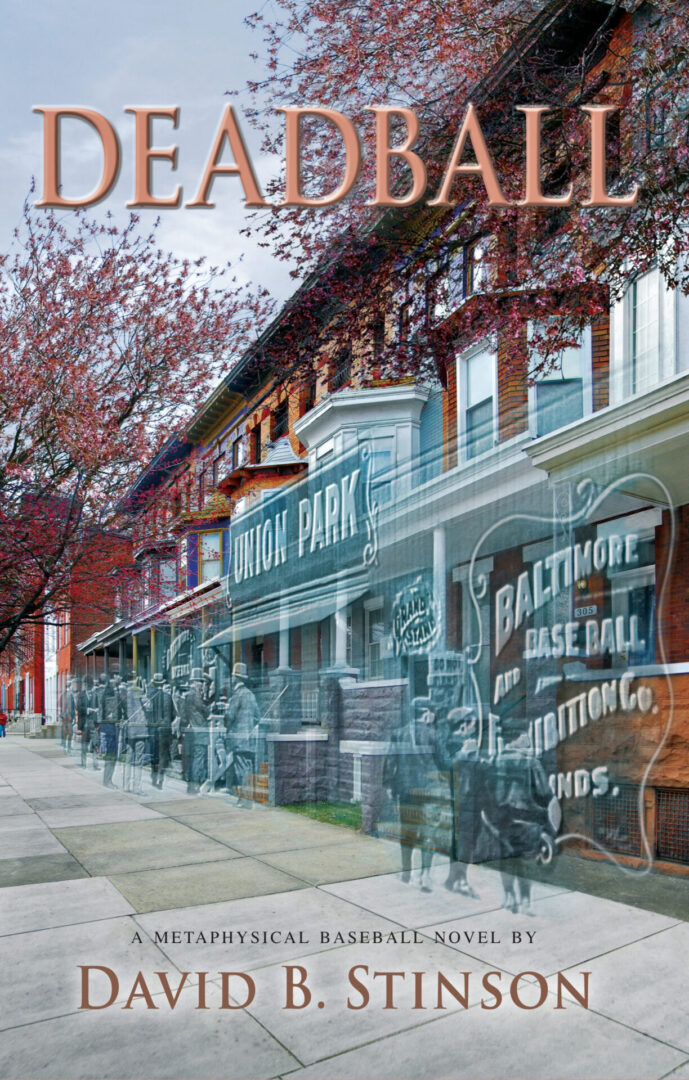Bush Stadium was located at 1510 Stadium Way, in Indianapolis, Indiana. Constructed in 1931, the ballpark originally was known as Perry Stadium, named after the family responsible for its construction.
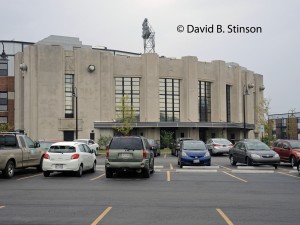
In 1942, the ballpark was renamed Victory Field in recognition of the country’s entrance into World War II. In 1967 the City of Indianapolis purchased the ballpark and renamed it Owen J. Bush Stadium, in honor of Donnie Bush, a part owner and President of the Indianapolis Indians, as well as a former major league player and Indianapolis native.
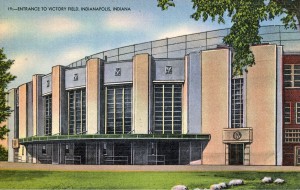
The ballpark was constructed by Osborne Engineering, an architectural and engineering firm responsible for designing many major league ballparks. In 1995, because of its cultural significance and its Art Deco design, Bush Stadium was placed on the National Register of Historic Places.

The ballpark was the home of the American Association Indianapolis Indians from 1931 to 1962, and from 1969 to 1996. In 1963, the ballpark was the home of the International League Indianapolis Indians, and from 1964 to 1986 it was the home of the Pacific Coast League Indianapolis Indians.
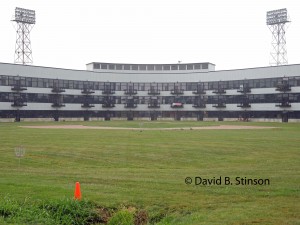
Bush Stadium also hosted many seasons of Negro Leagues baseball. According to Philip Lowery’s Green Cathedrals, the ballpark was the home field of the Negro National League Indianapolis ABC’s in 1931, the Negro Southern League Indianapolis ABC’s in 1932, the Negro American League (NAL) Indianapolis Athletics in 1937, the NAL in 1938 and 1939, the NAL Indianapolis Crawfords in 1940, the NAL Indianapolis Clowns in 1944 and 1946 to 1955, and the NAL Kansas City Monarchs from 1957 to 1961. In 1933 the ballpark was used as a neutral site for the Negro National League Chicago Cole’s American Giants and in 1943 the Washington-Homestead Grays and the NAL Birmingham Black Barons played game five of the Negro World Series at the stadium.
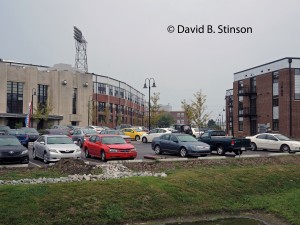
In 1987, Bush Stadium was used as the backdrop for the filming of the movie Eight Men Out.
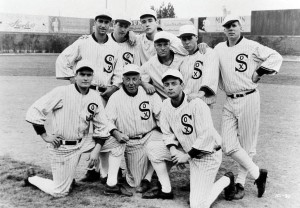
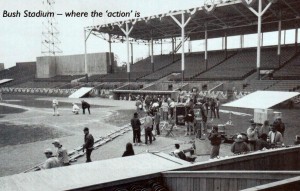
In July 1996, the Indians moved two miles southeast to Victory Field, located in White River State Park near downtown Indianapolis.
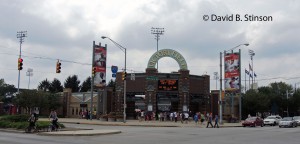
Like Bush Stadium in it’s day, Victory Field is considered one of the finest minor league ballparks in the country.
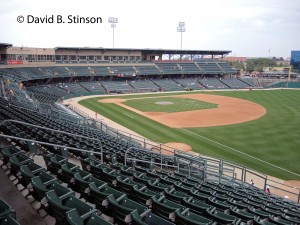
Like so many abandoned ballparks before it, once Bush Stadium’s major tenant departed, the future did not look bright. For a time Bush Stadium was transformed into a midget car dirt track raceway and later a parking lot for the United States Government’s Cash for Clunkers program.
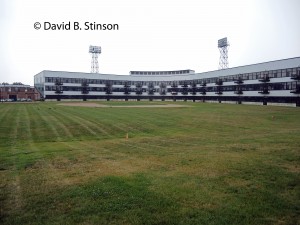
Luckily for fans of the game, the City of Indianapolis, and some concerned citizens, spearheaded an effort to save the ballpark from demolition through re-purposing.
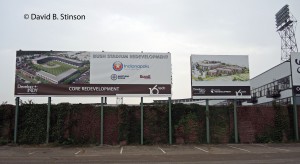
In 2011, the City embarked upon a project to turn the former ballpark into an apartment complex, based upon an idea originally proposed by Indiana Landmarks Chairperson John Watson, who ultimately brought the project to fruition.
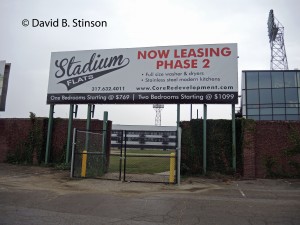
In 2013, Stadium Lofts opened, followed by Stadium Flats, constructed by Core Redevelopment.
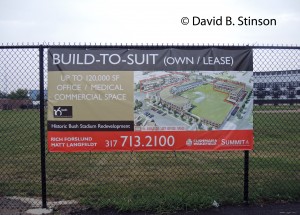
Portions of the stadium’s exterior brick and limestone wall, and the grandstand wood roof, have been preserved, along with light stanchions and a portion of the outfield wall.
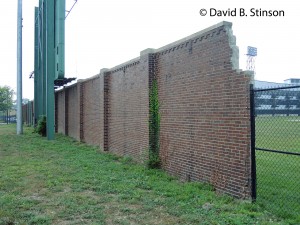
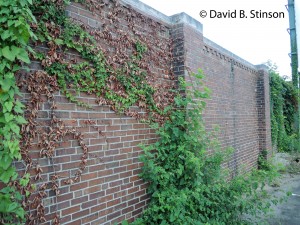
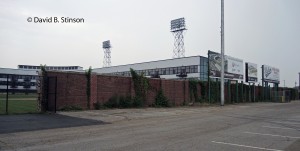
In the former center field corner is slated to be constructed a building with office, medical, and commercial space.
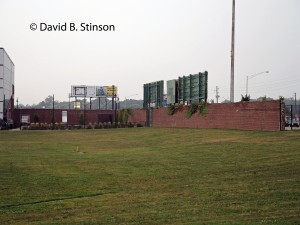
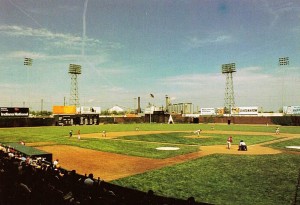
Bloomington, Indiana)
Also preserved is the original infield area and a portion of the outfield. The base paths are delineated with a red stamped-concrete walkway.
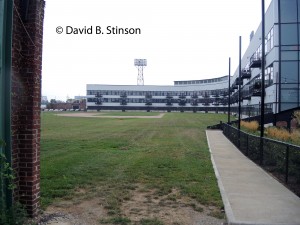
Although Bush Stadium,as it once was may now be a lost ballpark, a distinct portion of it lives on.
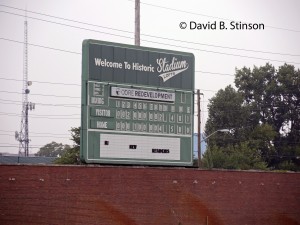
Kudos to the City of Indianapolis for not simply bulldozing the historic ballpark and instead coming up with a use that celebrates the stadium’s history and preserves a significant portion of the ballpark fans of the game to enjoy – or to live in (apartments range in cost from between $600 and $1,300 a month).
